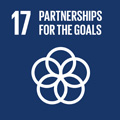- Docente: Maria Elena Bontempi
- Credits: 6
- SSD: SECS-P/05
- Language: English
- Teaching Mode: In-person learning (entirely or partially)
- Campus: Bologna
-
Corso:
Second cycle degree programme (LM) in
Economics and Econometrics (cod. 5977)
Also valid for Second cycle degree programme (LM) in Applied Economics and Markets (cod. 5969)
-
from Nov 11, 2025 to Dec 12, 2025
Learning outcomes
At the end of the course, students know the most appropriate estimating techniques for dynamic panel data models, both microeconomic (large and with more than one cross-sectional dimension) and macroeconomic (over a long time span). Specifically, they can: - critically understand theoretical and applied aspects of the vast literature based on dynamic panel data models; - apply dynamic panel data models techniques to their own analyses by programming specific routines using the STATA software.
Course contents
The course provides an overview of methodological and empirical analyses that can be performed on panel data, beyond simple FE and RE estimates. The preliminary and crucial step in any empirical research on panel data, whether longitudinal, time-series-cross-section, or multilevel, is to study the nature and relevance of the components that influence the variability of the variables. Each panel dataset can be considered as a set of grouped data, whether they are temporal observations nested within individuals or individuals nested within groups and supergroups. The key steps in guiding modeling strategies focus on decomposing total variability into variances between and within clusters and assessing whether there are relevant common factors within clusters and, in the case of temporal observations, whether these are stationary.
Some panel datasets cannot be analyzed with fixed effects but require multilevel models, in which it is essential to consider the different levels of aggregation present in the data.
Other analyses may require dynamic models with heterogeneous slopes. Meta-analysis can be used to study the relationship between covariates and effect size.
The course clearly requires the necessary prerequisities, especially for Erasmus students:
1. At this page [https://corsi.unibo.it/magistrale/AppliedEconomicsMarkets/insegnamenti/piano/2025/6756/000/000/2025] take a look at the content of courses such as Econometrics for Individual Data and Time Series Econometrics. At this page [https://corsi.unibo.it/2cycle/lmec/course-structure-diagram/piano/2024/5977/000/000/2024] take a look at the content of courses such as Econometric Methos, Microeconometrics and Macroeconometrics. In a nutshell, Wooldridge J.M. 2020 Introductory Econometrics. A Modern Approach, Cengage, 7th Edition condenses the minimum requirement.
2. A knowledge, at least basic, of STATA software is also required. Have a look at Baum, C. F. (2006) An Introduction to Modern Econometrics Using Stata, Stata Press; Cox N. J. (2001) Speaking Stata: How to repeat yourself without going mad, The Stata Journal, 1, Number 1, pp. 86–97.
Readings/Bibliography
Discussion papers, commented notes & slides, stata programmes and datasets will be available on the VIRTUALE platform and explained during the lectures.
Some references are
Snijders, T. and Bosker, R. (2012) Multilevel Analysis: An Introduction to Basic and Advanced Multilevel Analysis, 2nd edition, Sage
Hansen, B. C. (2022) Econometrics, Princeton University Press, ch. 17.
Hanga, M. and Geyer-Klingeberga, J. and Rathgebera, A. W. and Stöcklb, S. (2018) Measurement matters—A meta-study of the determinants of corporate capital structure, The Quarterly Review of Economics and Finance, 68, 211-225
Yin, S. and Jia, F. and Chen, L. and Wang, Q. (2023) Circular economy practices and sustainable performance: A meta-analysis, Resources, Conservation and Recycling, 190, 106838
Teaching methods
During the lectures, the methodologies will be accompanied by empirical applications based on the econometric software Stata (available via CAMPUS licence and student university credentials [https://www.unibo.it/secure/software-stata/]).
You will be involved in the implementation and discussion of empirical analyses, so please bring your laptop with you. Attendance at lectures is highly recommended.
Assessment methods
During the course, you will be assigned a homework (to be completed individually or in groups of up to three people) to be posted on VIRTUALE by the deadline. This will be a research question related to the topics covered in class (I will provide the data and questions), to be developed empirically, explaining your choices. The assignment contributes 30% to the overall assessment.
The final exam, which is compulsory and requires registration on AlmaEsami, accounts for the remaining 70%. It consists of an individual presentation in class (maximum duration 15 minutes) of an empirical analysis conducted on panel data. You can decide together with me which topic to explore in depth or agree that I will assign you a research question. The assessment focuses on your ability to analyse the topic in a theoretical and applied manner.
Non-attending students must take a written exam.
The overall assessment scale is as follows:
30 cum laude: flawless work
28-30: excellent work, demonstrating in-depth and comprehensive knowledge of the topic, as well as excellent comprehension and analytical skills.
24-27: good work demonstrating an appreciable degree of knowledge of the subject.
18-23: presence of disorder, with theoretical and methodological inaccuracies.
<18: insufficient work
Teaching tools
Theoretical lectures are combined with practical sessions during which you will receive the necessary guidance to carry out your empirical analyses. The data sets and programming files needed to perfom the applied analyses will be provided during the lectures. The material will be made available on the platform Virtuale. A virtual room on TEAMS will be available in case you are unable to physically attend one lecture and to communicate via chat.
Software STATA: go to https://www.unibo.it/secure/software-stata/
Office hours
See the website of Maria Elena Bontempi
SDGs




This teaching activity contributes to the achievement of the Sustainable Development Goals of the UN 2030 Agenda.
